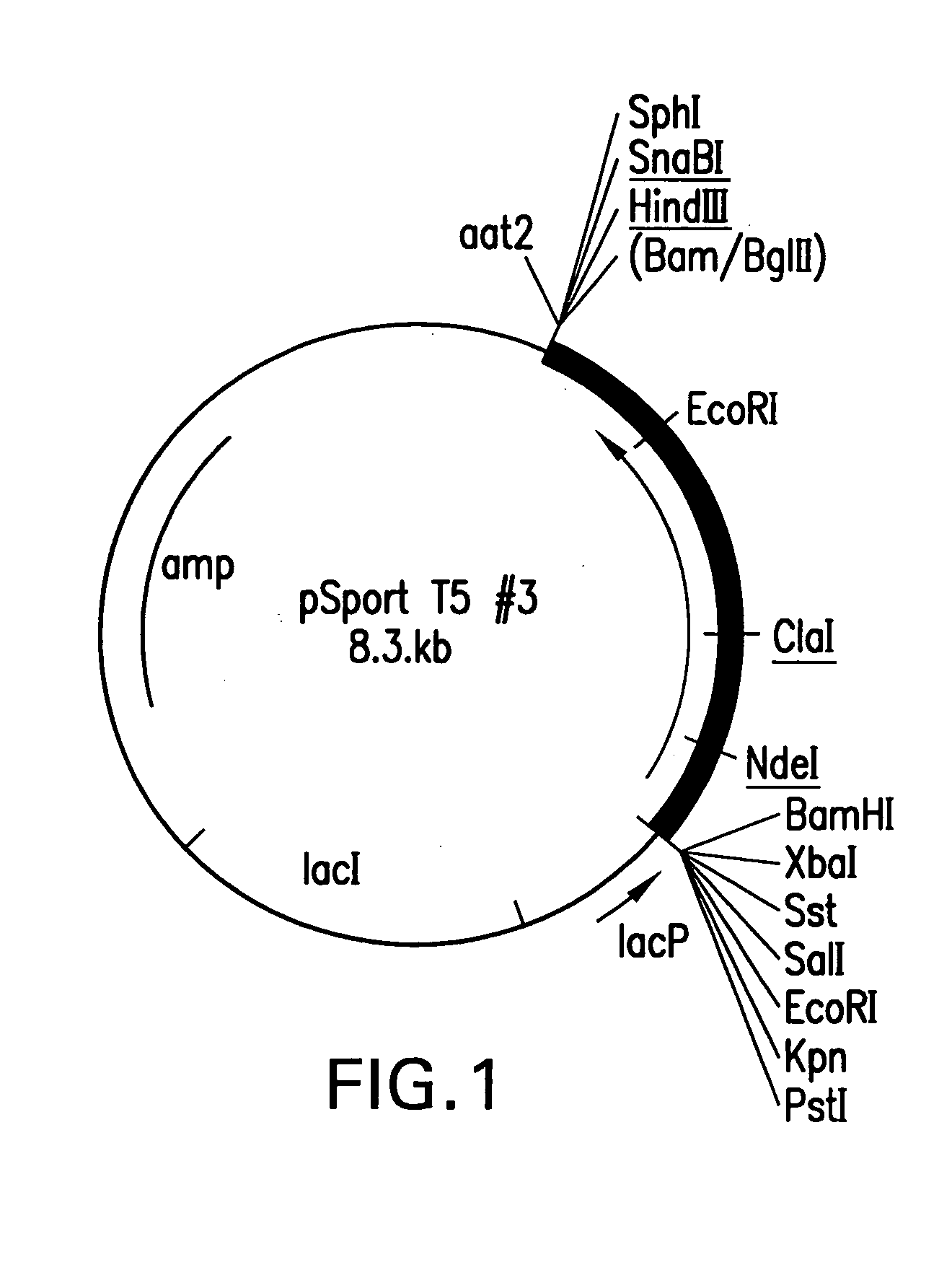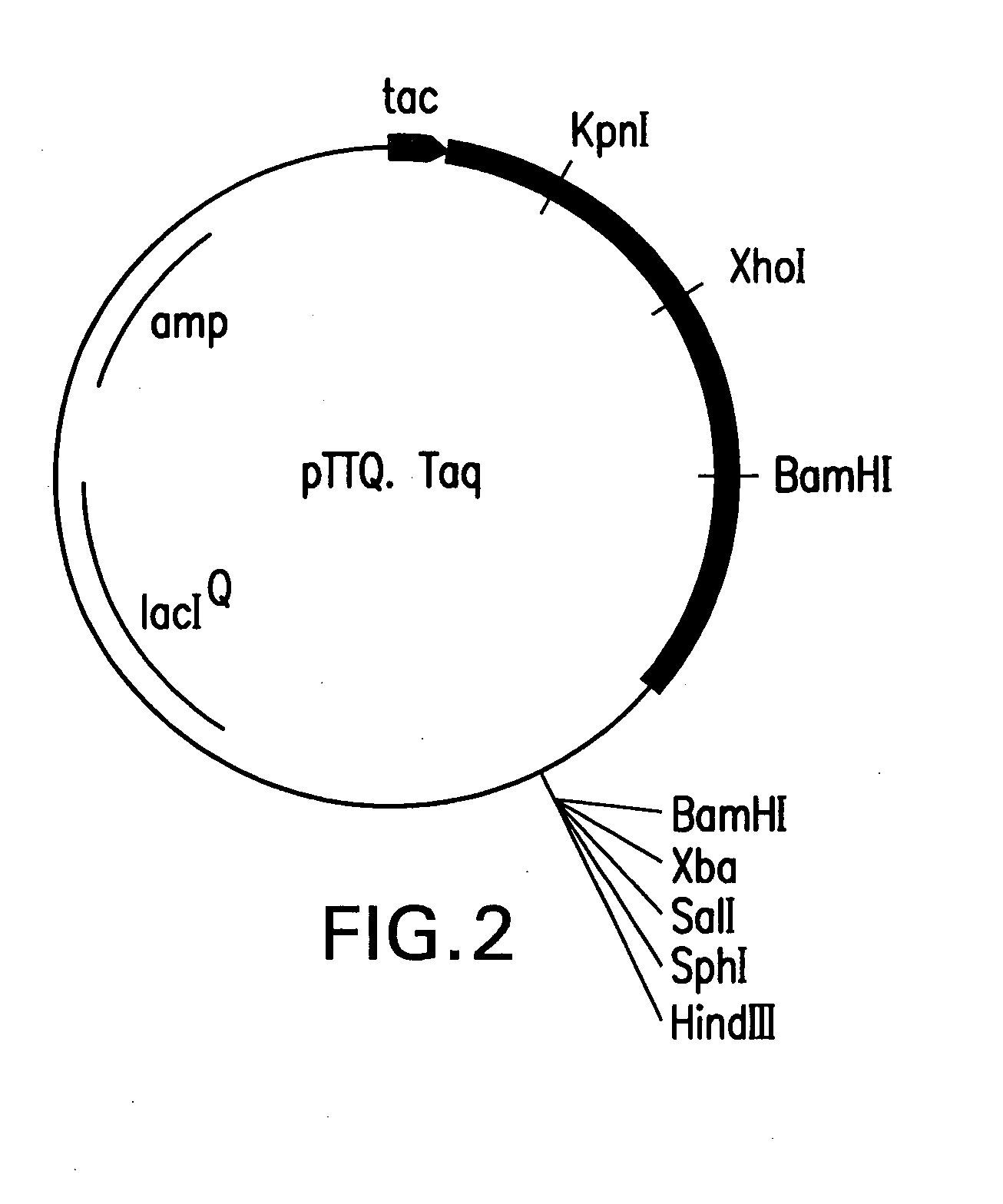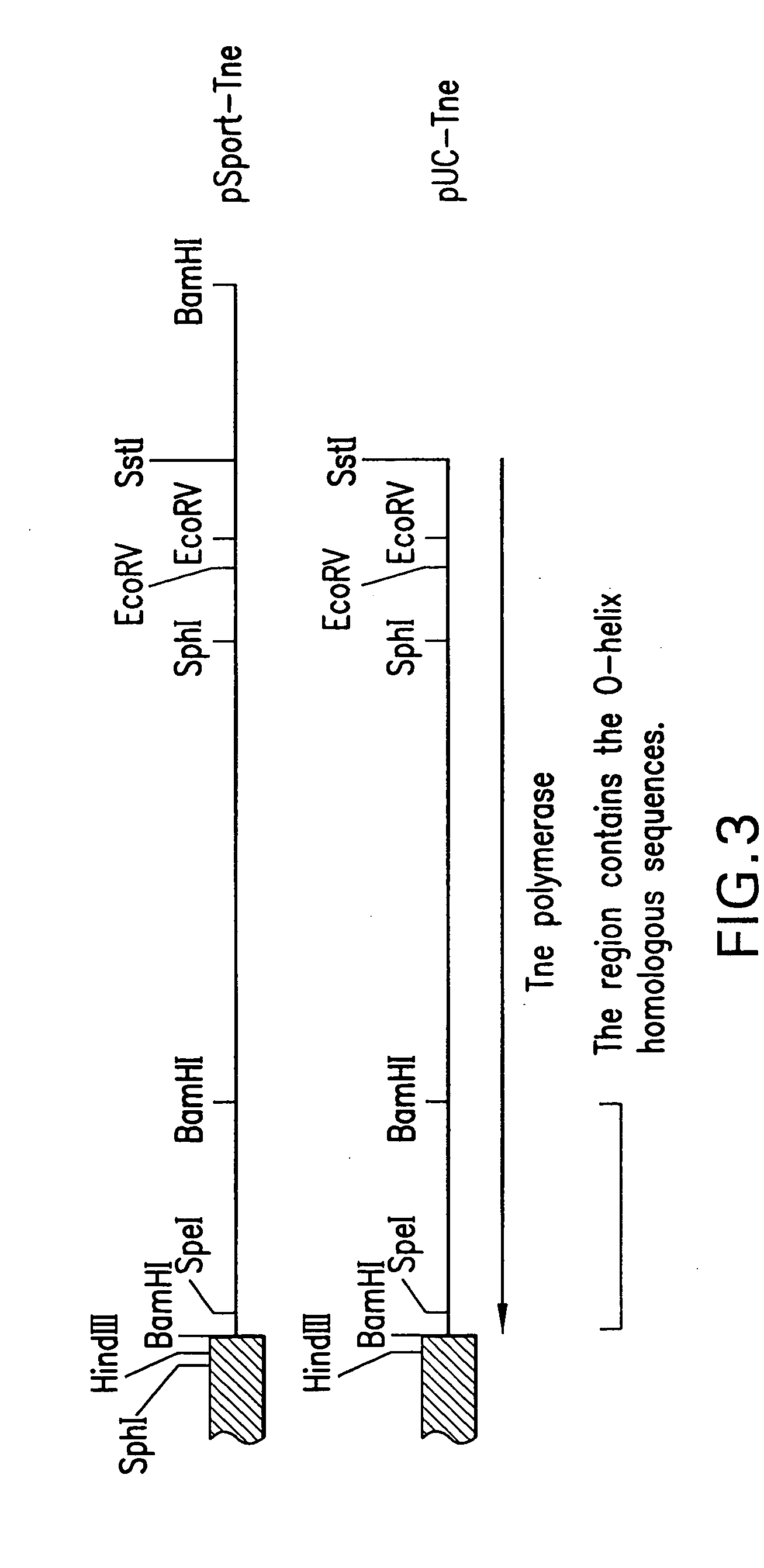Mutant DNA polymerases and uses thereof
a technology dna polymerases, which is applied in the field of molecular cloning and expression of mutant dna polymerases, can solve the problem that the author did not reassemble the sequenced fragments
- Summary
- Abstract
- Description
- Claims
- Application Information
AI Technical Summary
Benefits of technology
Problems solved by technology
Method used
Image
Examples
example 1
Preparation of Non-discriminating Mutant DNA Polymerases
[0085] As models, T5, Tne, and Taq DNA polymerases were used. The polymerase active site, including the DNTP binding domain, is usually present in the C-terminal region of the polymerase (Ollis, D. L., et al., Nature 313:763-766 (1985); Freemont, P. S., et all., Proteins 1: 66-73 (1986).) Our partial sequence of the Tne polymerase gene suggests that the amino acids that presumably contact and interact with the dNTPs are present within the 694 bases starting of the internal BamHI site, based on the homology with the prototype polymerase E. Coli PolI (Poleskey A. H., et al., J. Biol. Chem. 265:14579-14591 (1990). The corresponding amino acids in other polymerases are present in the O helix.
[0086] Initially, it was attempted to replace amino acids 544 to 729 (coordinates from Leavitt and Ito, Proc. Natl. Acad. Sci USA 86:44654469 (1989)) of T5 DNA polymerase with amino acids 500 to 675 (coordinates from Dunn and Studier, J. Mol....
example 2
Preparation of Non-discriminating Mutant DNA Polymerase Substantially Reduced in 3′ to-5′ Exonuclease Activity
[0102] To make the 3′-to-5′ exonuclease mutants, an oligonucleotide, GA CGT TTC AAG CGC TAG GGC AAA AGA [SEQ ID No. 16] was used to convert the Asp322 to Ala322. An Eco47III site was created to facilitate screening of the mutant following mutagenesis. The mutagenesis was performed using a protocol as described in the Biorad manual except T7 DNA polymerase was used instead of T4 DNA polymerase. See supra. The mutant clones were screened for an Eco47III site that was created in the mutagenic oligonucleotide. One of the mutants having the created Eco47III site was used for further study.
[0103] To incorporate the 3′-to-5′ exonuclease mutation into an expression vector, the mutant phage DNA obtained as described above was digested with SphI and HindIII and a 2 kb fragment containing the mutation was isolated. The fragment was cloned in pUC-Tne to replace the wild-type fragment ...
example 3
Preparation of Non-discriminating Mutant DNA Polymerases Exhibiting Substantially Reduced 5′ to-3′ Exonuclease Activity
[0106] In order to generate an equivalent mutant devoid of 5′-to-3′ exonuclease activity as well as 3′-to-5′ exonuclease activity, the presence of a unique SphI site present 680 bases from the SstI site was exploited. pUC-Tne35FY was digested with HindIII, filled-in with Klenow fragment to generate a blunt-end, and digested with SphI. The 1.9 kb fragment was cloned into an expression vector pTTQ19 at the SphI-SmaI sites and was introduced into E. coli DH10B. (Stark, M. J. R., Gene 51:255-267 (1987)). This cloning strategy generated an in-frame polymerase clone with an initiation codon for methionine from the vector. The resulting clone is devoid of 219 amino terminal amino acids of Tne DNA polymerase. This clone is designated as pTTQTne535FY. The clone produced active heat stable polymerase. No exonuclease activity could be detected in the mutant polymerase as evid...
PUM
 Login to View More
Login to View More Abstract
Description
Claims
Application Information
 Login to View More
Login to View More - R&D
- Intellectual Property
- Life Sciences
- Materials
- Tech Scout
- Unparalleled Data Quality
- Higher Quality Content
- 60% Fewer Hallucinations
Browse by: Latest US Patents, China's latest patents, Technical Efficacy Thesaurus, Application Domain, Technology Topic, Popular Technical Reports.
© 2025 PatSnap. All rights reserved.Legal|Privacy policy|Modern Slavery Act Transparency Statement|Sitemap|About US| Contact US: help@patsnap.com



